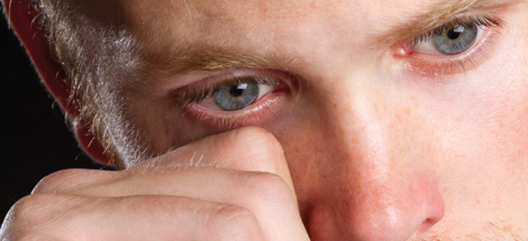INFLAMMATION OF
THE CONJUNCTIVA
The conjunctiva is the thin layer of tissue that covers the outer surface of the eye. Conjunctivitis can affect one or both eyes. It comes in different forms:
- Infective conjunctivitis – bacterial or viral infections, such as the common cold, can lead to this highly-contagious form of the disease. Infected contact lenses or contaminated eye make-up may also be responsible.
- Allergic conjunctivitis – allergic reactions to pollen, animal fur or dust mites can inflame the conjunctiva.
- Irritant conjunctivitis – substances such as chlorinated water, shampoo or air pollution can irritate the eye. A loose eyelash can also lead to this form of conjunctivitis.
How to spot it - The eyes will be red and inflamed, and there can be a thick yellow discharge, which crusts over the eyelashes, especially after sleep. Itchy or watery eyes are also common symptoms. Some people may experience a burning or gritty sensation in the eyes, or swollen eyelids. Infective conjunctivitis can be accompanied by cold-like symptoms, such as a fever or a sore throat. Allergic conjunctivitis often occurs in connection with hay fever symptoms, such as sneezing and a runny, itchy nose.
Treatment - Conjunctivitis may clear up itself over a few days or a week. Sticky coatings on the eyelids can be carefully wiped away with cotton wool and water. Irritant conjunctivitis should clear up as soon as the irritant, such as a loose eyelash, is removed. If not then treatment may be needed, including:
- Antibiotic eye drops or ointment can be prescribed for infective conjunctivitis
- Antihistamines can be prescribed for allergic conjunctivitis
- A baby who has neonatal conjunctivitis should be seen by a doctor straight away
With any form of conjunctivitis, people are advised not to wear contact lenses until the symptoms have disappeared. They should also wash their hands regularly, and prevent the condition from spreading.

